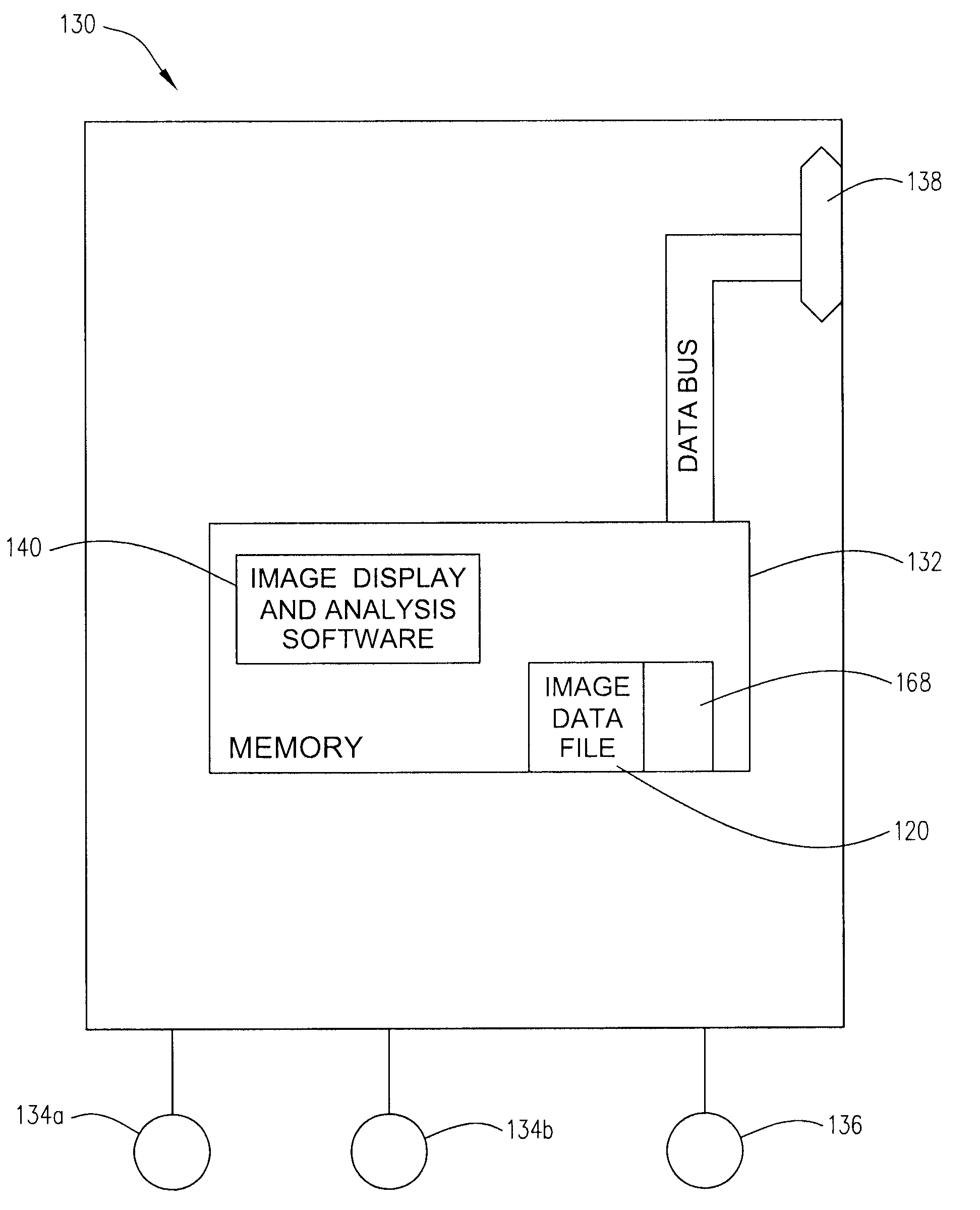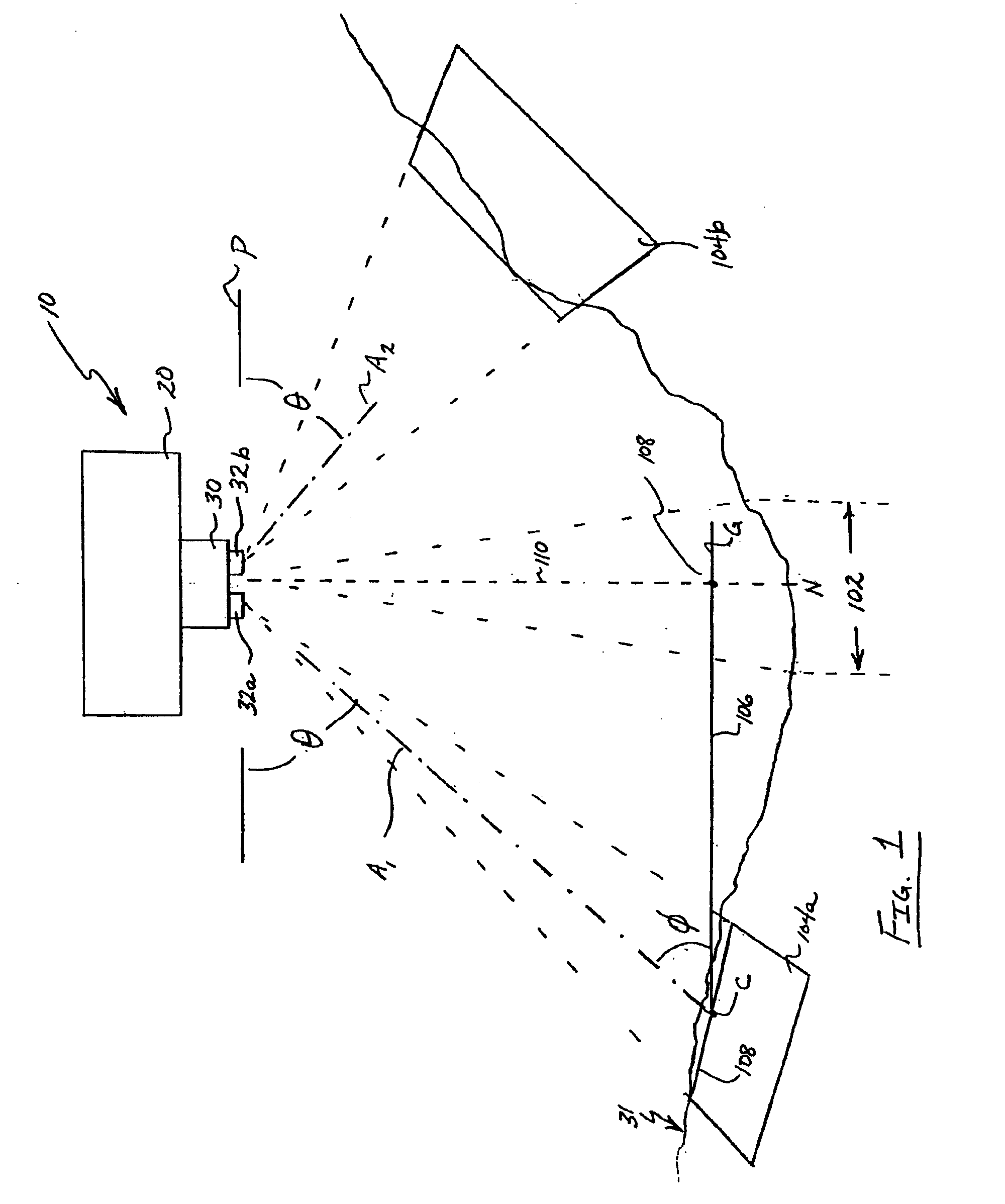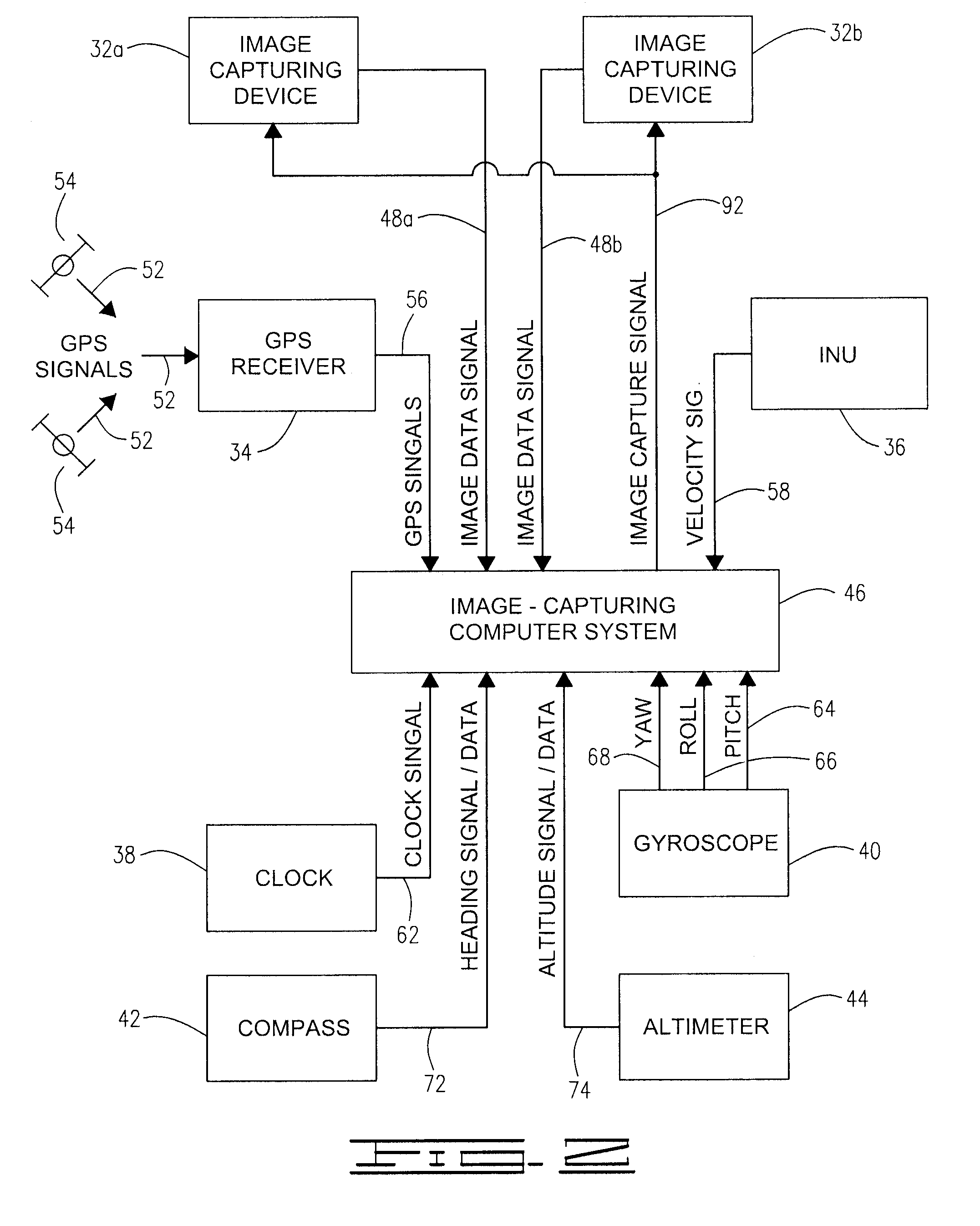Method and Apparatus for Capturing, Geolocating and Measuring Oblique Images
a geolocation and oblique image technology, applied in the field of photogrammetry, can solve the problems of introducing other undesirable distortions and/or inaccuracy, affecting the recognition and identification of objects depicted in ortho-rectified orthogonal images, and affecting the accuracy of the imag
- Summary
- Abstract
- Description
- Claims
- Application Information
AI Technical Summary
Benefits of technology
Problems solved by technology
Method used
Image
Examples
Embodiment Construction
[0023]Referring now to the drawings, and particularly to FIG. 1, one embodiment of an apparatus for capturing and geolocating oblique images of the present invention is shown. Apparatus 10 includes a platform or vehicle 20 that carries image-capturing and geolocating system 30.
[0024]Platform 20, such as, for example, an airplane, space shuttle, rocket, satellite, or any other suitable vehicle, carries image-capturing system 30 over a predefined area of and at one or more predetermined altitudes above surface 31, such as, for example, the earth's surface or any other surface of interest. As such, platform 20 is capable of controlled movement or flight, either manned or unmanned, along a predefined flight path or course through, for example, the earth's atmosphere or outer space. Image capturing platform 20 includes a system for generating and regulating power (not shown) that includes, for example, one or more generators, fuel cells, solar panels, and / or batteries, for powering image...
PUM
 Login to View More
Login to View More Abstract
Description
Claims
Application Information
 Login to View More
Login to View More - R&D
- Intellectual Property
- Life Sciences
- Materials
- Tech Scout
- Unparalleled Data Quality
- Higher Quality Content
- 60% Fewer Hallucinations
Browse by: Latest US Patents, China's latest patents, Technical Efficacy Thesaurus, Application Domain, Technology Topic, Popular Technical Reports.
© 2025 PatSnap. All rights reserved.Legal|Privacy policy|Modern Slavery Act Transparency Statement|Sitemap|About US| Contact US: help@patsnap.com



